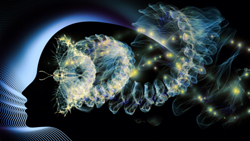Listverse – March 11, 2014
By Gary L. Sidely
Since the late 19th century, psychiatry in the Western world has claimed to be a medical specialty. By stressing that mental disorders are an “illness like any other,” psychiatrists strive to keep the same status as their colleagues in cardiology, oncology, and other specialties. Mental disorders, they argue, should be viewed no differently from diseases like heart failure or leukemia.
There is a dearth of evidence for this grand claim. Psychiatry, ably abetted by the drug industry, has created an idea of mental health that may bear little resemblance to reality. Listed below, in no particular order, are the 10 biggest myths of modern psychiatry.
 10. Mental Illness Is The Result Of A Broken Brain
10. Mental Illness Is The Result Of A Broken Brain
Most psychiatrists believe that the main cause of mental illness is a life-long brain defect. We are often told that people diagnosed with schizophrenia (a severe mental health problem involving hearing voices, jumbled thoughts, and unusual beliefs) display brain deformities. Using the latest technologies, we are shown not-so-pretty pictures of schizophrenic brains displaying abnormal bumps and craters.
But recent research suggests that the antipsychotic drugs used to treat schizophrenia can cause human brain defects directly in proportion to the amount of medication ingested—the more of the drug consumed, the greater the extent of damage to the brain. Despite failing to find any strong association between brain shrinkage and the intensity of the schizophrenia, the researchers cling to the idea that antipsychotic medication only aggravates underlying brain defects. However it has also been demonstrated that antipsychotic drugs given to macaque monkeys reduce their brain volumes by around 20 percent, casting further doubt on the broken brain dogma.
Furthermore, childhood abuse (a major risk factor for schizophrenia and other disorders) is known to alter brain structure, suggesting that early trauma may contribute to structural changes in the brains of adults with mental health problems.
Thus, it seems possible to conclude that brain defects in schizophrenia sufferers are likely to result from what life in general, and psychiatry in particular, inflict upon them.
 9. Severe Mental Disorders Are Mainly Genetic In Origin
9. Severe Mental Disorders Are Mainly Genetic In Origin
Most psychiatrists also link the risk of schizophrenia to the genes we inherit from our parents. In support of this argument they point to studies of identical twins (who share exactly the same genes), which seem to show that if one twin has schizophrenia there is a very high chance the other will too. Almost 70 years ago, one of the most famous twin researchers, Franz Kallman, announced an 86 percent concordance rate for schizophrenic twins—in other words, if one twin was diagnosed with schizophrenia there was an 86 percent chance their sibling would suffer from the same condition—suggesting a huge genetic influence.
Although these claims have moderated over the last few decades, 21st century psychiatry persists in the view that schizophrenia is primarily genetic in origin. As well as twin studies, psychiatrists cite adoption research that measures the concordance rate between blood relatives separated early in life. The idea is that this rules out the possibility that aspects of a shared environment may account for the correspondence. By demonstrating that children of schizophrenic mothers continued to be at greater risk of developing schizophrenia themselves, despite being adopted away as babies, the adoption studies are often considered to be the most convincing evidence of a genetic basis for the condition.
However, decades of research has signally failed to identify the genetic marker that supposedly underlies schizophrenia. Meanwhile, psychiatrists like Jay Joseph have sought to demonstrate that the twin and adoption studies touted as proof of a genetic cause are riddled with biases, ranging from blatant misreporting of the data to subtle statistical tricks. Reviews of the research that have excluded the effects of these flaws and focused only on more recent, better designed studies, have estimated the schizophrenia concordance rate for identical twins and non-identical twins to be 22 percent and 5 percent respectively, indicative of a real but modest genetic contribution—on a par with the genetic contribution to traits such as intelligence.
Life experiences seem to be a much more potent cause of the symptoms labelled as schizophrenia. For example, childhood sexual abuse has been convincingly shown to render a person 15 times more susceptible to psychosis in adulthood. The size of this effect is far in excess of any gene yet discovered.
 8. Psychiatric Diagnoses Are Meaningful
8. Psychiatric Diagnoses Are Meaningful
Medical experts diagnose illness—the symptoms presented guide them to deduce the presence of a named disease process that explains the cause and maintenance of the patient’s complaints. So if a doctor makes a diagnosis of diabetes, we know that we lack a hormone called insulin and that injections of it should improve our health.
But if mental health problems are not primarily the result of biological defects (or a “broken brain”), psychiatry is faced with a problem that is impossible to solve. So how do psychiatrists overcome this fundamental obstacle? They gather around a table and invent a list of mental illnesses!
In the USA, this list is crafted by the American Psychiatric Association and is grandly titled the Diagnostic and Statistical Manual of Mental Disorders (DSM for short). The latest edition (DSM-5) of this psychiatric bible thrust itself onto the world last year and lists over 300 mental illnesses.
A useful diagnosis should pinpoint a specific underlying pathology that can explain the symptoms, provide guidance as to the appropriate treatment, and display high levels of reliability (so that two or more psychiatrists assessing the same person will typically reach the same conclusion). DSM-5 (along with its predecessors) fails on all three fronts. Even a key figure in earlier editions of the DSM berated the latest offering as “deeply flawed” for mislabeling normal emotions as mental illness.
 7. The Number Of Mentally Ill People Is Increasing
7. The Number Of Mentally Ill People Is Increasing
Psychiatry constantly tells us about the vast number of “mentally ill” people there are in the general population, most of them never having received professional help and many not even aware that they have a problem. One recent study claimed that almost half of all Americans will suffer a formal mental illness at some point in their lives.
The central reason for this apparently ever-increasing number is that psychiatry keeps widening the net of mental illnesses to incorporate more and more normal reactions to life’s challenges. According to DSM-5, if you remain sad two weeks after the death of a loved one you are suffering from “major depressive disorder.” A child displaying tantrums risks acquiring the label of “disruptive mood dysregulation disorder.” And a modest degree of forgetfulness in later years means you are suffering with “mild neuro-cognitive disorder.” It is a wonder anyone manages to avoid the grasp of these ever-elongating psychiatric tentacles.
 6. Long-Term Use Of Antipsychotics Is Relatively Benign
6. Long-Term Use Of Antipsychotics Is Relatively Benign
Psychiatry carries a shameful history of failing to recognize when its treatments are doing more harm than good. Whether it be mutilating genitals, slicing brains (“leucotomy”), surgically removing organs, inducing comas with potentially lethal doses of insulin (“insulin coma therapy”) or triggering fits by electrocuting people’s heads (“electro-convulsive therapy”), psychiatrists always seem the last to realize they are damaging the very people they are paid to help.
And antipsychotic medication could well be a similar story. Long term use, particularly of the older (typical) antipsychotics, blights around 30 percent of patients with uncontrollable twitching and spasms of the tongue, lips, face, hands, and feet, an often permanent affliction known as tardive dyskinesia. The newer (atypical) antipsychotics are a little more forgiving in this respect, although not to the point of eliminating the problem altogether.
In addition to the curse of tardive dyskinesia, long term antipsychotic users may also be at greater risk of drug-induced heart disease, diabetes, and obesity (the newer atypical type being arguably more problematic in this regard). As we’ve already discussed, and perhaps most disturbingly of all, there is mounting evidence that antipsychotics may directly cause brain shrinkage.
Read the rest of the article here: http://listverse.com/2014/03/11/10-shocking-myths-of-modern-psychiatry/


SHARE YOUR STORY/COMMENT